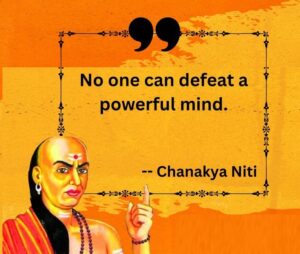Chanakya was a multifaceted figure in ancient India, serving as an educator, writer, tactician, philosopher, economist, lawyer, and imperial counselor.
Chanakya, also known as Kautilya or Vishnugupta, stands out as a significant figure in ancient Indian history. His contributions span various fields, including education, philosophy, economics, and military strategy.
Widely recognized as the author of the Arthashastra, Chanakya’s influence extends into the realms of classical political economy and governance. His seminal work, which dates from the 4th century BCE to the 3rd century CE, is considered a precursor to classical economics. Despite its loss during the Gupta Empire’s decline in the 6th century CE, the Arthashastra was rediscovered in the early 20th century, reestablishing Chanakya’s critical role in Indian history.
Chanakya’s Role in the Mauryan Empire
Chanakya played a pivotal role in the rise of the Mauryan Empire, particularly in assisting Chandragupta Maurya in his ascent to power in 321 BCE. Chanakya’s strategic acumen and political insight were instrumental in the establishment of the Mauryan Empire. Both Chandragupta and his successor, Bindusara, relied heavily on Chanakya’s counsel, which helped solidify their rule and expand their influence.
Chanakya’s early interactions with King Nanda, the ruler of Magadha, were marked by his dramatic and somewhat symbolic protest against Nanda’s rule. When Chanakya found himself waiting in the king’s palace, he purposefully occupied the throne, only leaving when forcibly removed. This act of defiance was a precursor to his subsequent efforts to dismantle the Nanda regime and pave the way for the Mauryan rise.
Best Blogs
- 30 Money Blogs. The Best Personal Finance Blogs
- 38 Sports Blogs That Will Inspire and Motivate
- 29 Best Awesome & Amazing Health Blogs
- Top Gardening Blogs on The Internet
- The Most Popular Blogs
Chanakya’s Strategic Contributions
Chanakya’s impact on Chandragupta’s rise to power was profound. For seven years, Chanakya trained Chandragupta, honing his skills as a warrior and strategist. Despite initial setbacks and defeats, including a failed attack on Magadha, Chanakya’s perseverance and strategic planning eventually led to success. His ability to adapt and regroup, even after facing adversity, was crucial in the eventual downfall of the Nanda Empire and the establishment of the Mauryan dynasty.
One of the Arthashastra’s notable aspects is its emphasis on espionage and strategic deceit. Chanakya advised monarchs to build extensive networks of informants, reflecting a pragmatic approach to governance and security. This focus on intelligence and strategic manipulation was integral to the Mauryan administration and demonstrated Chanakya’s understanding of the complexities of political power.
Legacy and Historical Debate
Chanakya’s legacy is well-documented in Indian scriptures and historical records, yet his historical accuracy is debatable. Despite his significant role in Mauryan history, he is not mentioned in the travelogues of the Greek ambassador Megasthenes, leading some scholars, including certain Ambedkarites, to question his historical authenticity.
Nevertheless, Chanakya’s influence on Indian political thought and strategy is undeniable. His contributions to statecraft, economics, and military strategy continue to be studied and admired, affirming his place as a central figure in the history of ancient India.



